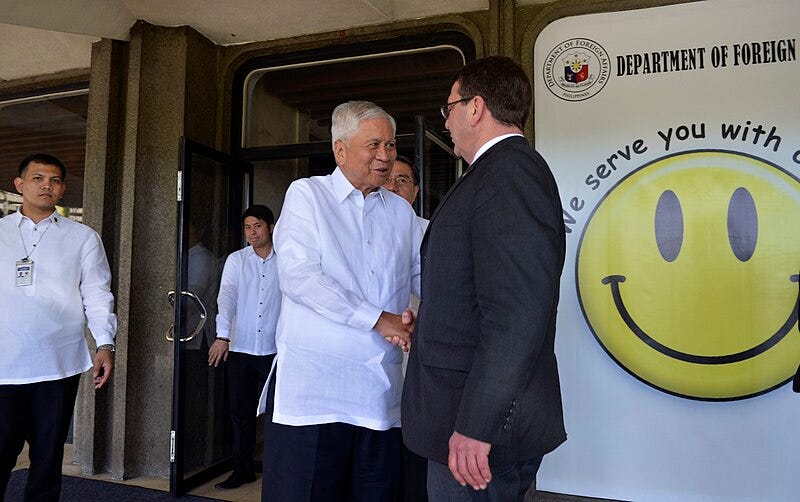A first suggested lens to put on
I wrote in a previous post how the practice of law is shaped by what ‘lenses’ one sees their work through, and how the effective lawyer has the ability to wear different lenses and choose the right lens at the right time.
A first suggested lens I’d a recommend a lawyer put on is what I call the ‘purpose lens’: how do I see my role and what is my purpose?
Purpose is motivating (and more motivating than money)
Some years ago, our legal team at work suddenly experienced a few resignations in quick succession. My manager and I believed that our company offered a lot to employees (and we really enjoyed working there), so I began working on an initiative to look into this in more detail.
As part of my research I came across the book Drive by Daniel Pink. The core message of that book is that the ‘carrot and stick’ ways of motivating people at work (the allure of money and the threat of punishment) have been shown by scientific studies to be ineffective and actually harmful.
Rather, the key to motivating employees (and, in fact, people in general) is to give them autonomy, mastery and purpose. Of these three elements, it is a sense of purpose which provides the “proper balance” and “context” for autonomy and mastery.
Pink defines purpose as a cause or a sense of doing something beyond one’s self. The book is full of anecdotes about how having a sense of purpose at work results in “higher levels of satisfaction and subjective well-being” (to quote the findings from a University of Rochester study cited in the book) and leads to increased endurance in demanding jobs (like when the Mayo Clinic allowed its doctors to “spend one day a week on an aspect of their job that was most meaningful to them”).

Purpose orients a team
As part of that same initiative described above, we as a legal team decided to examine what our team's purpose was. We built a purpose statement from the ground up, beginning with individual team member purpose statements, and then getting into small groups to produce team purpose statements, which were then amalgamated to produce a wider team mission statement.
Our team mission was (and still is) to be a business enabler, trusted business partner and valued expert for the whole company.
I have found this purpose statement very helpful in knowing what my role is, and what it is not. When different choices have been available at work (say, whether to push back hard and insist on a certain point, even where I might have considerably more bargaining power, or propose a mutually beneficial solution which gets business done quicker), knowing our team’s purpose has helped me make this decision.
Being aware of your role delivers more for clients
We also asked our internal stakeholders at work: what does it mean to be a business-enabling lawyer. And conversely: what behaviour constitutes non-business-enabling?
Their answers pointed to attributes such as having an open mind and a willingness to explore possibilities, having a real ‘can-do’ attitude, with non-business-enabling behaviour being, for example, to simply say ‘no’ to an idea without providing any alternative options.
I have seen lawyers join our team from companies where their legal team had played a different role, whether being more advisory or taking more ownership of certain processes, for example. And I’ve seen some of those lawyers take time to find their feet to deliver for the company in the way that is expected of them.
I write from an inhouse lawyer’s perspective about how having a proper perception of one’s role helps deliver client satisfaction, but I’ve also experienced this with the private practice lawyers I’ve engaged in my own work.
Much of the time I’ve seen their role as to use their expertise to guide me in my decision, rather than just giving me the legal position and expecting me to translate it for internal stakeholders. On occasion I’ve found it frustrating when a partner or solicitor in a law firm simply sits on the fence, saying “it’s up to the business”.

Wearing the purpose lens in practice
The title to this post is a nod to surgeon Atul Gawande’s book The Checklist Manifesto: How to Get Things Right. In that book Gawande describes his research into how use of a checklist helps avoid mistakes and produces better outcomes (whether in the field of medicine, construction or investing). The book is full of inspiring anecdotes about how the following of a checklist saved lives.
The book documents Gawande’s work on a UN-sponsored initiative to introduce a checklist into surgical operating theatres and at one point, he describes how they stumbled on the idea of having each member of an operating team identify their role at the start of a surgical procedure as the first item on the checklist.
In a study of the effectiveness of these checklists, at the Kaiser hospitals in Southern California, Gawande writes how “they found that their staff’s average rating of the teamwork climate improved from ‘good’ to ‘outstanding’. Employee satisfaction rose 19%. The rate of nurse turnover…dropped from 23 percent to 7 percent. And the checklist appeared to have caught numerous errors…”
I’ve found it helpful, at the start of a piece of work, or even when I first switch on my laptop, to remind myself of our team’s purpose statement, of the role that I am expected to play as part of that mission, and of the value that I can add as a lawyer. This has become the first item on my checklist, the first lens I put on when looking at my work.
I’ve particularly found this helpful in the more mundane work that comes across one’s desk.
Recently I was working on an agreement where the amendment requests were drip-fed by the other party, and by the time it came to the fourth batch of changes, I found myself getting frustrated with the project. But then, thinking about how my role is to help enable business, to help increase the ecosystem of partners using our company’s products (part of which involves making our contracts easy to work with), I began to see my task in a different light.

We may not, as lawyers, be breaking new ground or achieving life changing results (like some of the lawyers I have written about here and here). But all the companies and clients we represent will have their own cause and likely their own mission statements to express it. We as lawyers have our own special skills that we can bring to the table in helping them achieve that purpose.
Wearing the purpose lens, and thinking about the nature of my role, has helped me tap into these wider missions and get more satisfaction from work and hopefully deliver more of what is expected by the clients that I work with.
As Daniel Pink says, in a quote from Drive: “The science shows that the secret to high performance isn’t our biological drive or our reward-and-punishment drive, but our third drive - our deep-seated desire to direct our own lives, to extend and expand our abilities, and to live a life of purpose.”




